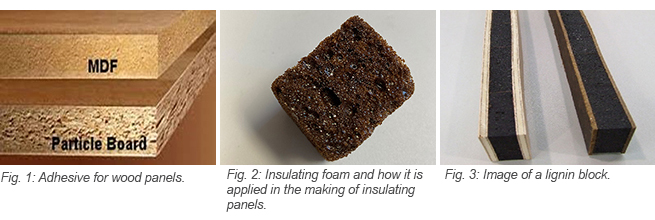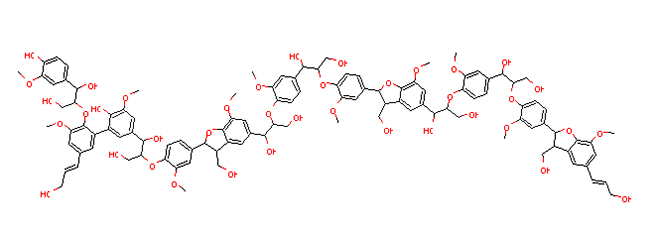Despite its potential as an added-value product for pulp and paper mills, each year several thousand tons of lignin end up in the mills’ black liquor, which is a mixture containing cooking chemicals and residual wood material that remains after pulping.
Under current practices, most of this lignin is burnt in recovery boilers, which allows for the regeneration of cooking chemicals and the production of energy for the mill. To increase profit margins, certain mills are being equipped with conversion units, that convert lignin into added-value products. Despite the challenges involved in these processes, several factors contribute to significantly expanding the marketing of these products, such as:
- The closure of several chemical pulp mills has led to a market demand for applications that are known.
- Biorefinery is a result of the industry’s desire to find an alternative solution to using fossil fuels. The new technology of producing alcohol using sugars seems economically fragile and profits could be increased by using residual lignin.
- Preoccupations concerning sustainable development place lignin as a base product of choice for green chemistry and for ‘’green marketing’’.
- Recent developments in technology have shown that lignin can be used in the manufacturing of various bioproducts, such as carbon fibers, adhesives, or insulating foams.
To allow for a smooth transition, mills will continue to use lignin for producing energy, while gradually putting in place strategies for lignin conversion into added-value products. This is an excellent path to follow to reduce the risks associated with market development.
What are the Applications for Lignin?
As a polymeric surfactant, lignin is used as a dispersing agent for concrete, ceramics, carbon black, gypsum boards, as emulsion stabilizers for waxes and asphalt, or as a grinding aid for minerals. Its binding properties make it a sought-after bioproduct for making fertilizer pellets or animal feed. In collaboration with various partners, Innofibre is currently working on ways to modify lignin so that it will be compatible to use in various sought-out applications. Innofibre also provides its expertise in the formulation of lignin-based phenolic resin, melamine, polyurethane, and urea formaldehyde The images below provide a few examples of ways to use lignin:

Instead of using a polyurethane insulating foam, Innofibre has developed the formulation of a lignin-based foam. This high added-value product provides interesting thermal and acoustic insulation properties that can be applied to the construction or automobile industries. Innofibre has also formulated a flexible foam that can be used as protective wrapping material.
Challenges of Lignin Valorization
To maximize its use, knowledge about lignin’s molecular structure is essential. This would allow to efficiently orient its extraction processes and possibly obtain products more likely to be valorized. Unfortunately, the molecular structure of a lignin molecule remains quite mysterious and unknown. Why is that so?
To begin with, each plant produces its own version of lignin., with important variations from one plant to the other. This is because of how the molecule is produced by the plant, which requires the combinatorial assembly of three essential monomers, which are the ‘bricks’ forming the foundation of the molecule. By combinatorial, it is understood that known chemical laws are involved in the assembly of these monomers, but that the exact order of assembly is not predetermined.
Also, the lignin that is extracted is generally broken and altered during the process. To find the structure of a lignin molecule with only fragments is like attempting to solve a 1000-piece puzzle without its model, for which most of the pieces have been broken, and with a lot of identical pieces!
Finally, even if we succeed in obtaining a relatively intact lignin molecule, most of the measures that can be applied provide information about its complex structure, only one particular characteristic at a time, such as the number of each monomer or the molecular weight of each molecule.
Artificial Intelligence to the Rescue
Though these obstacles seem impossible to overcome, several solutions are available. For example, research currently in progress proposes using artificial intelligence (AI), known to form links between a sea of complex data. Ultimately, we wish to provide to the AI, a set of experimental results obtained from an unknown lignin molecule and to receive answers about a possible molecular structure.
To get there, we must first train this AI using several examples of molecular structures, paired with experimental results. The obstacle is that these examples do not yet exist, because the precise structure of lignin is currently unknown. However, there is knowledge available about several of the chemical laws involved in assembling lignin’s monomers. In addition, it’s possible to calculate using numerical chemistry, several physical properties pertaining to a given molecular structure. Innofibre’s proposal is to build a bank of numerical ‘pseudo-lignin’ structures, each associated to a series of theoretical physical properties. This bank of ‘pseudo-lignins’ and properties would be used to train the AI; a training that could last several days or weeks, according to the complexity of the task.
After having trained the AI, we would be able to use a series of real experimental results and ask the AI to provide us with a structure that would reproduce these results. This part can be done rapidly, that is, in a question of seconds. AI can even obtain a result from data that it has never encountered before. One could almost say that the machine ‘has imagination’!
 Model of the lignin molecule obtained by Innofibre’s research
Model of the lignin molecule obtained by Innofibre’s research
At this moment, the bank of ‘pseudo-lignins’ has been created and calculations pertaining to their physical properties has begun. Several research groups are successfully working on similar projects, but with small molecules, such as medications. With Innofibre’s research contributions, we hope to find a way to efficiently apply this method on lignin, and probably on other molecules with similar properties.
Innofibre Mission
"Contribute to the technological positioning and sustainable development of the paper and biorefining industry, by supporting the innovation and diversification of products derived from biomass and by adapting papermaking technologies."
 Michel Labbé
Michel Labbé
Researcher at Innofibre
 Mathieu Germain
Mathieu Germain
Teacher and researcher at Innofibre














